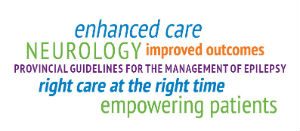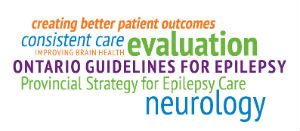By Deron Hamel
Dr. Carter Snead says the best possible long-term result from new provincial epilepsy-care guidelines would be for primary-care physicians, neurologists and patients to use the standards to enhance care of Ontarians with seizure disorders.
 The Provincial Guidelines for the Management of Epilepsy in Adults and Children creates a framework for general practitioners to know at what point a patient experiencing symptoms related to epilepsy needs to be referred to a neurologist. The guidelines also help ensure appropriate medications are prescribed at appropriate times.
The Provincial Guidelines for the Management of Epilepsy in Adults and Children creates a framework for general practitioners to know at what point a patient experiencing symptoms related to epilepsy needs to be referred to a neurologist. The guidelines also help ensure appropriate medications are prescribed at appropriate times.
Adding to this, Snead, a neurologist at Toronto’s Hospital for Sick Children (SickKids), says the guidelines, which took effect in January, can also be used as a tool for people with epilepsy and their families to consult if they believe they’re not receiving the care they require.
Snead says the first step to success is for physicians – and patients – to understand their importance.
“The guidelines are nothing but words on paper unless we can operationalize them by getting the medical community in the province who cares for these patients to buy into them,” he tells Voices of Epilepsy.
“The other important issue here is that patients have access (to the guidelines) and they should utilize that access and ask their doctors about (the guidelines) if they think they’re not being treated appropriately. The guidelines should be used by the patients to empower their care.”
Prior to their creation there were no clinical guidelines for epilepsy management in Ontario. Until now, Ontario neurologists had followed guidelines established by the American Academy of Neurology. As a result, the consistency of epilepsy care has varied in the province.
Snead says he’s hopeful the guidelines will result in defined processes that will eliminate the grey areas that create inconsistencies, ensuring that people with epilepsy get timely access to the treatment they need.
“If (a physician) sees a patient with epilepsy, instantly they think, ‘Well, I can try to treat this patient, but I have these guidelines, so if I run into trouble I can refer this person to a district epilepsy centre,’ (where they can see a specialist),” Snead explains.
This is Part 2 of a two-part story. Click here to read Part 1.
Click here for information on the Provincial Guidelines for the Management of Epilepsy in Adults and Children.
Click here for information on the Provincial Strategy for Epilepsy Care.
If you have feedback on this story, or have a story of your own that you would like to share, please contact the newsroom at 800-294-0051, ext. 23, or e-mail deron(at)axiomnews.com. You can also leave a comment below.

 Dr. Carter Snead, a neurologist at Toronto’s Hospital for Sick Children (SickKids), says the greatest overall changes he hopes come from the guidelines, which took effect in January, are improved patient flow between primary-care physicians and specialists as well as more efficient prescription of medications.
Dr. Carter Snead, a neurologist at Toronto’s Hospital for Sick Children (SickKids), says the greatest overall changes he hopes come from the guidelines, which took effect in January, are improved patient flow between primary-care physicians and specialists as well as more efficient prescription of medications. This marks the first year Scotiabank has hosted Purple Day events at its branches, and it’s a move welcomed by Epilepsy Ontario, says the agency’s project manager Nikki Porter.
This marks the first year Scotiabank has hosted Purple Day events at its branches, and it’s a move welcomed by Epilepsy Ontario, says the agency’s project manager Nikki Porter. But since having the surgery, which was a resection of the parietal lobe to remove damaged tissue the size of a tangerine, the King City, Ont. resident has not had a single seizure.
But since having the surgery, which was a resection of the parietal lobe to remove damaged tissue the size of a tangerine, the King City, Ont. resident has not had a single seizure.



